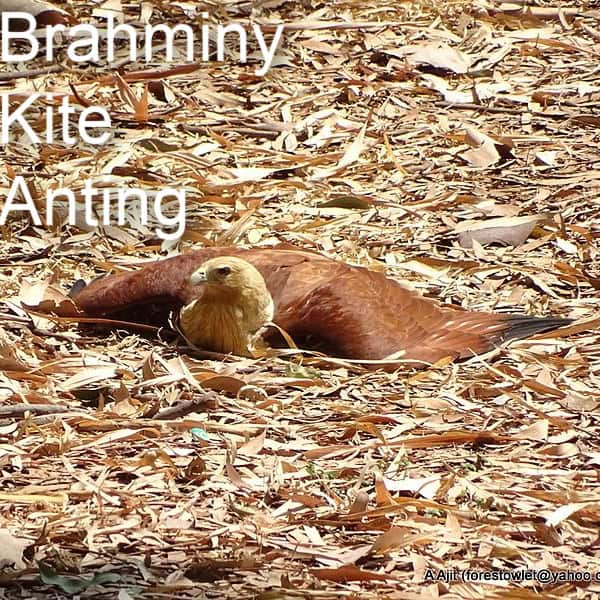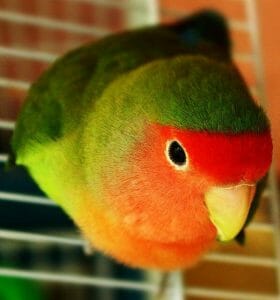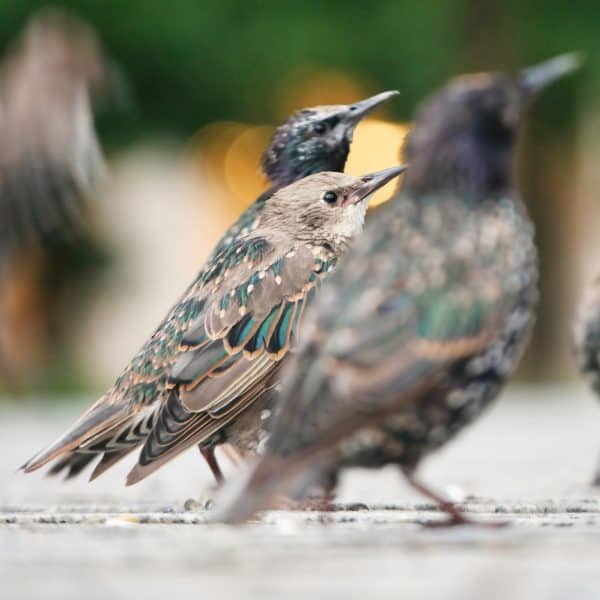Last Updated on by Mitch Rezman
Birds, with their captivating behaviors and vibrant lives, never cease to amaze.
Among the numerous fascinating activities they engage in, anting stands out for its sheer peculiarity and complexity.
Anting is a maintenance behavior where birds rub insects, predominantly ants, on their feathers and skin. This behavior is divided into two primary types: active and passive anting.
During active anting, a bird picks up insects in its bill and rubs them over its body.
In passive anting, the bird lies in an area dense with ants, performing movements akin to dust bathing.
This article delves into the intricate details of anting, its historical documentation, various modes, potential functions, and related behaviors, providing a comprehensive understanding of this avian phenomenon.
Historical Overview of Birds & Anting
The scientific community’s interest in anting dates back to 1831 when American ornithologist John James Audubon observed juvenile turkeys “wallowing” in abandoned ant hills.
This early account was followed by a detailed description in 1847, in a manuscript titled “Bird of Jamaica,” which recounted ants removing parasites from a tame crow. In 1934, Alexander Hugh Chisholm’s book “Bird Wonders of Australia” further highlighted this behavior.
The term “anting” itself was introduced by German ornithologist Erwin Stresemann in 1935, who referred to the behavior as “Einemsen” in the German journal “Ornithologische Monatsberichte.”
Indian ornithologist Salim Ali later translated this term into English, cementing “anting” in the ornithological lexicon.
Modes of Anting: Active Anting
Active anting primarily occurs on the ground, although some bird species practice it on tree branches. A bird will place the tip of its wing on the ground and rub its bill, containing an ant, from the tip of the wing upwards.
During this process, the bird’s tail is often tucked between its legs and under its body, causing it to appear unstable.
Typically, birds use one ant at a time and rub each feather only once with an ant, though exceptions exist.
Starlings, for example, have been observed using a ball of ants in their bills for anting.
Active anting is a rapid process, often lasting from several minutes to half an hour, and can be easily mistaken for regular feather maintenance.
This behavior is predominantly individual, although some birds practice it in small groups. Notably, birds also use substitutes in active anting, such as snails, grasshoppers, amphipods, and larvae.
Passive Anting
In contrast, passive anting involves a bird rubbing its wings and tail on an anthill.
After locating an anthill, the bird spreads its wings forward and sits on its tail, attracting ants.
The bird then provokes the ants by rubbing its head or beak through its feathers, causing the ants to roam freely around its feathers.
To prevent ants from crawling onto its head or beak, the bird shakes its head vigorously.
This form of anting is less common and primarily observed in robins and ravens.
Functions of Anting: Ridding of Ectoparasites
One hypothesis posits that anting helps birds control and rid their feathers of ectoparasites.
The chemicals secreted by ants, particularly formic acid, are believed to inhibit the growth of bacteria and fungi that can destroy feathers. However, evidence supporting the efficacy of these chemicals in deterring other parasites, such as feather lice and mites, remains limited.
Feather Grooming
Another hypothesis suggests that anting serves as a form of feather maintenance.
By bringing saliva to the feathers during anting, birds can remove old preen oil and other substances, thereby aiding in feather grooming.
Food Preparation
The food preparation hypothesis proposes that birds use anting to make ants more palatable. Ants produce formic acid as a defense mechanism against predators.
By rubbing the ants in their feathers, birds might neutralize this harmful acid, making the ants safe for consumption.
This behavior is particularly noted in European starlings.
Sensory Self-Stimulation
Some researchers suggest that anting may serve as a form of sensory self-stimulation, similar to human behaviors like smoking.
This hypothesis argues that anting provides pleasure and exhibits characteristics of a habit, despite lacking an obvious biological function.
However, definitive evidence for this hypothesis is still lacking, and studies offer conflicting conclusions.
Functions in the Molt
Passerine birds, which molt during the summer months, often focus anting on their wings and tails, where the largest feathers emerge.
It is hypothesized that anting stimulates the growth of these feathers during molt.
However, not all birds that practice anting do so during molt, suggesting other potential functions.
Species of Ants Used in Anting
Birds primarily select ants from the subfamily Formicinae for anting, as these ants produce and spray formic acid.
Other subfamilies, such as Dolichoderinae and Myrmicinae, are also used, though less frequently.
Birds exhibit a preference for Formicinae ants over other species, with 24 identified ant species being utilized for anting.
Substitutes for Ants
Interestingly, birds sometimes use other organisms and objects as substitutes for ants in anting behavior. T
These substitutes include garlic snails, amphipods, millipedes, dermapterans, caterpillars, grasshoppers, hemipterans, mealworm larvae, and wasps. This behavior highlights the adaptability and resourcefulness of birds in maintaining their plumage.
Dusting and Sunning
Dusting with soil from ant-hills is sometimes considered equivalent to anting. Additionally, some birds, such as antbirds and flickers, not only ants but also consume ants as a significant part of their diet.
Other opportunistic ant-eating birds include sparrows, wrens, grouse, and starlings. European honey buzzards have been observed gathering fresh maple branches on the ground and spreading themselves over it, possibly using the branches as tools to attract ants for anting.
Cigarette Butts
In a curious parallel to anting, some birds have been observed picking up cigarette butts, sometimes lit, and rubbing themselves with them.
Nicotine in the butts is a natural mite repellant also used by house finches in Mexico to line their nests.
Conclusion
Anting is a remarkable and multifaceted behavior observed in over 200 bird species. Its purposes range from parasite control and feather maintenance to food preparation and potential self-stimulation.
The behavior’s complexity and the variety of ant species and substitutes used highlight the adaptability and ingenuity of birds. Further research into anting will undoubtedly continue to unveil the mysteries of this intriguing avian behavior, offering deeper insights into the lives and habits of our feathered friends.
Written and Approved by the Windy City Parrot Content Team
Author Profile
Latest entries
 The Traveling BirdJune 26, 2025Can You Name 5 Parrot Species That Are Living Wild in the USA?
The Traveling BirdJune 26, 2025Can You Name 5 Parrot Species That Are Living Wild in the USA? Bird BehaviorJune 26, 2025How is it Parrots Are Problem Solvers Social Animals and Even Use Tools?
Bird BehaviorJune 26, 2025How is it Parrots Are Problem Solvers Social Animals and Even Use Tools? Bird & Parrot AnatomyJune 25, 2025How a Tiny Chemical Modification Makes Parrots Nature’s Living Paintings
Bird & Parrot AnatomyJune 25, 2025How a Tiny Chemical Modification Makes Parrots Nature’s Living Paintings PigeonsJune 20, 2025How Do Parrots Thrive in Cities Outside Their Native Habitats?
PigeonsJune 20, 2025How Do Parrots Thrive in Cities Outside Their Native Habitats?




